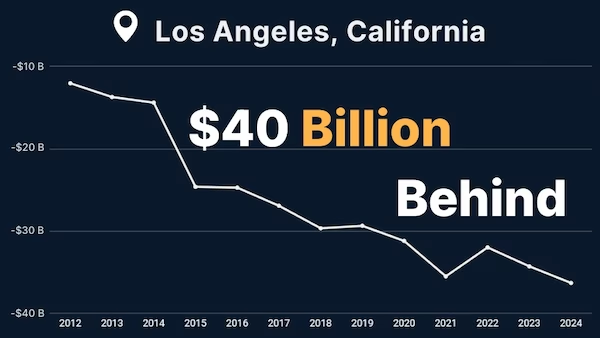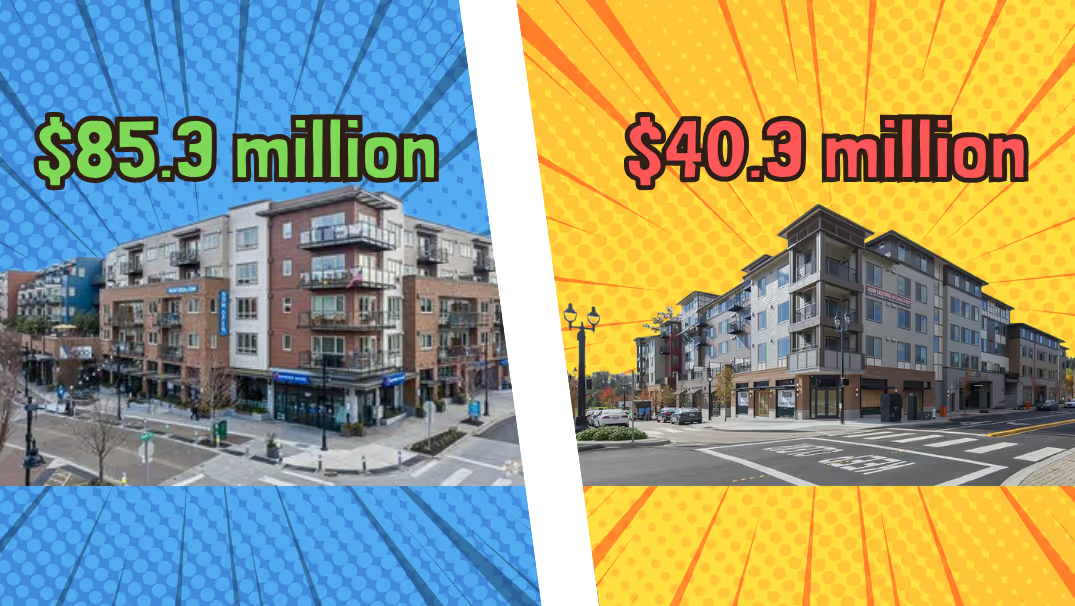Editor's Note: The challenges our cities face are growing, but so is the strength of this movement. Every story we share, every idea we spread, and every tool we build exists because people like you are committed to showing up. Your membership isn’t passive—it’s the momentum that makes change possible.
The genesis of Strong Towns coincided with the 2008 financial crisis. Strong Towns founder and president Chuck Marohn has said that he started writing in November of that year because he didn’t know what else to do: “I was angry, frustrated, and disillusioned with the world around me, a world that didn’t make any sense, one that was falling apart on many levels in ways that seemed, for me, both easy to comprehend yet incomprehensible to everyone around me.”
By December, in an article called “What’s the matter with engineers?”, he was already beginning to describe the consequences of what would eventually be called the Growth Ponzi Scheme:
The current economic crisis is likely to hit local governments hard in the coming years. It will be important to watch and see how communities react. I suspect there will be those who “double down” on their current development pattern, investing even more in infrastructure to entice new development. The state and federal governments may even fund some of that spending. This is a road to ruin, but one that will likely be advocated for by those in the engineering profession. It's not that they are self-serving. I think the opposite—they genuinely want to make things better. The problem is just that they have a very limited toolbox.
Over the coming months and years, Chuck, along with an increasing number of other writers and collaborators, identified six core Strong Towns principles. These stand in stark contrast to the conventional thinking proving so ruinous to North American cities. In our free Strong Towns 101 course, released last year, Chuck unpacks these principles in detail, and I encourage you to check that out. In the meantime, I want to introduce them here and recommend some follow-up resources.
Strong Towns Principle #1: Financial solvency is a prerequisite for long-term prosperity.
The goal of a town or city is to endure. To do that, cities have to be solvent. In fact, solvency must become an absolute obsession for communities. At minimum, this means having more assets than liabilities, and an ability to pay our debts. But cities have new habits to develop and bad habits to unlearn. For example, we need to do #DoTheMath on every proposed new development: What are the short-term costs now, and what will we be paying to maintain or replace for generations to come?
Not only do we need a more thorough accounting of our debts, we need a more accurate definition of assets. Here’s a big one: streets are not assets.
Go deeper with these articles:
Strong Towns Principle #2: Land is the base resource from which community prosperity is built and sustained. It must not be squandered.
For many towns and cities that weren’t built next to a large body of water (ocean, major river, etc.) or haven’t experienced a sudden, dramatic change in topography, the supply of land might seem limitless. But that just isn’t true. Land is a finite resource and, as the literal foundation of a community’s success, it has to be stewarded well.
We must use the land we have productively. As Strong Towns senior editor Daniel Herriges has written, “the activity taking place on that city's land [must be] creating enough wealth to support the infrastructure and services needed for that place to continue to exist and thrive.”
Go deeper with these articles:
- “We Need Growth. But Only If It Generates Real Wealth,” by Daniel Herriges
- “Value Per Acre Analysis: A How-To For Beginners,” by Daniel Herriges
Strong Towns Principle #3: A transportation system is a means of creating prosperity in a community, not an end in itself.
A community getting serious about solvency and more productive land use will soon find itself thinking differently about transportation. One example is with our network of roads and streets. If streets are liabilities rather than assets, then we need to be even more discriminating about if, when, where, and how we build or expand them. A Strong Towns series last year focused on how Kansas City, Missouri, went all-in on the Suburban Experiment after World War II, including adding more than 1,600 miles of streets and roads—a 12x increase for only a 13% bump in population. The costs for maintaining and replacing those roads continue in perpetuity; it’s the equivalent of Kansas City taxpayers building a road to Los Angeles every 50 years or so.
Kansas City isn’t alone in this trend. Far from it. North American cities need to evaluate every transportation decision by whether or not it will build enduring prosperity.
Go deeper with these resources:
- Transportation in the Next American City (video)
- “A Transportation Revolution,” by Charles Marohn
- Aligning Transportation with a Strong Towns Approach (course)
- Confessions of a Recovering Engineer (forthcoming book)
Strong Towns Principle #4: Job creation and economic growth are the results of a healthy local economy, not substitutes for one.
The temptation is understandable: chase after new jobs and new growth, at almost any cost. But this approach can lead to a “race to the bottom,” with different cities competing to see who can give away the most stuff—in the form of tax breaks and other incentives—to a big employer looking to move or expand. It can also tempt cities to “chase smokestacks” by expanding infrastructure and subsidizing new development in the hopes that, “If we build it, they will come.”
A Strong Towns approach to economic development looks less like big-game hunting and more like gardening. If you build a strong town using the principles laid out here, employers (and prospective employees) will beat down the door to move there.
Go deeper with these articles:
- “Is Your City Racing to the Bottom or the Top?” by Jordan Clark
- “A Tax-Incentive Race to the Bottom Won't Make Texas Strong,” by Daniel Herriges
Strong Towns Principle #5: Strong cities, towns, and neighborhoods cannot happen without strong citizens (people who care).
Jane Jacobs described neighborhoods as co-creations, writing, “Cities have the capability of providing something for everybody, only because, and only when, they are created by everybody.”
Places endure when residents assume ownership of their cities. This is quite different from the passive role conventionally played by residents. In the Strong Towns 101 course, Chuck Marohn describes the shift that must take place as moving from “Residents as Customers” to “Residents as Shareholders.”
For 13 years, we’ve been documenting the stories of Strong Citizens, including in our podcasts It’s the Little Things (2018-2020) and The Bottom-Up Revolution (2020-present). Check them out below.
Go deeper with these podcasts:
Strong Towns Principle #6: Local government is a platform for Strong Citizens to collaboratively build a prosperous place.
Chuck concludes this lesson in Strong Towns 101 by urging local governments to reframe their role and refocus their attention. Local government isn’t the implementation arm of state and federal policies. Yet too often, local government finds itself looking up the “food chain” for money and direction.
But that’s not how Strong Towns views local government. In the Strong Towns approach, local government—a “collection of us”—re-orients toward people, toward the needs of residents, in a posture of service. It relates to the state and federal governments first and foremost as advocates for its residents. “The hallmark of a Strong Town,” Chuck says, “is a local government that is focused on its people, on serving them, and on being relevant to this ‘co-creation’ of a place.”
Go deeper with these resources:





